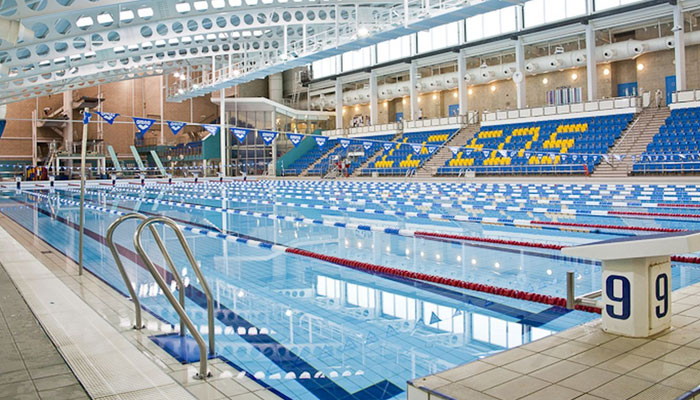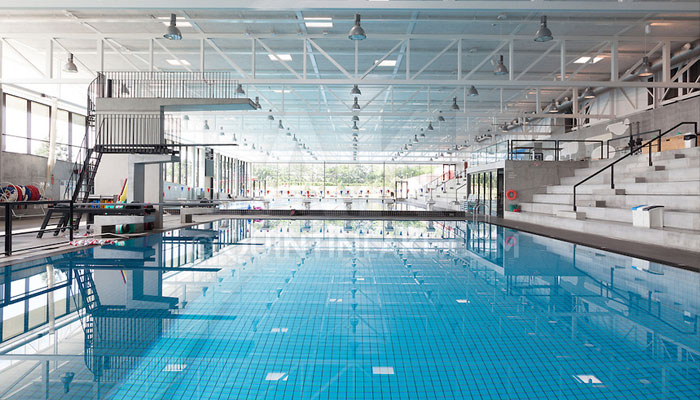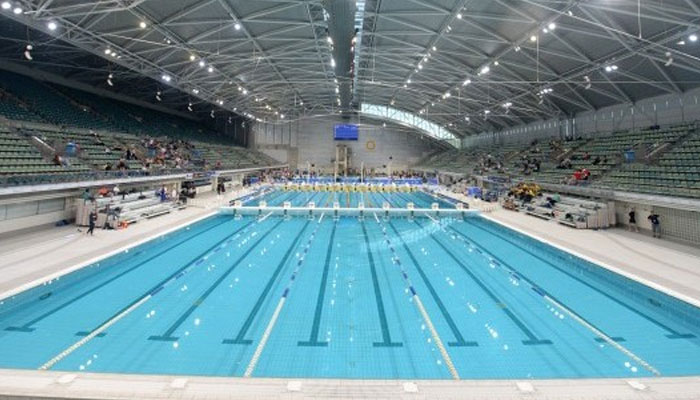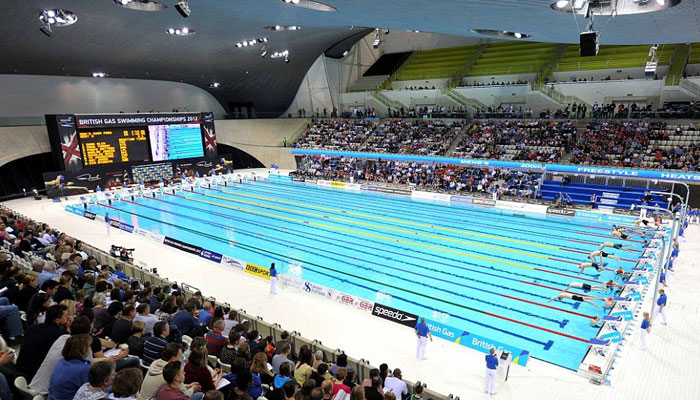Melbourne Sports and Aquatic Centre
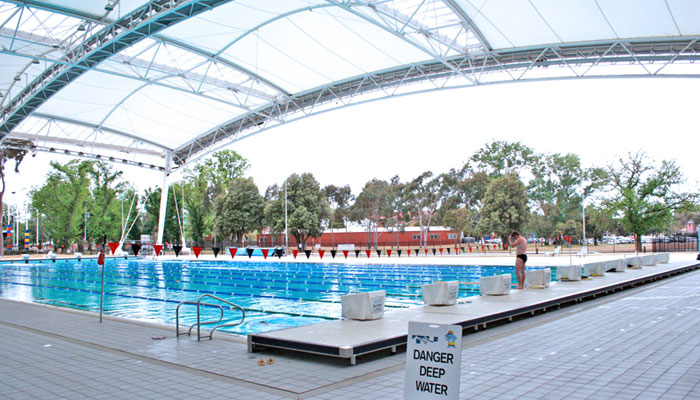
Swimming stadiums have been around for thousands of years, with the first indoor pool believed to have been built in Rome in the 1st century AD. Over time, swimming stadiums have evolved to become more advanced and sophisticated, with modern swimming stadiums featuring state-of-the-art technology and design.
Design and Architecture:
A world-class swimming stadium like the Melbourne Sports and Aquatic Centre requires careful consideration of various design elements, such as pool dimensions, seating capacity, lighting, and ventilation. The Melbourne Sports and Aquatic Centre boasts a 50-meter indoor pool, diving pool, and warm-up pool, along with seating for over 1,000 spectators. The stadium is also equipped with advanced lighting and air handling systems to ensure optimal conditions for swimmers and spectators alike.
Facilities:
In addition to pools and seating areas, swimming stadiums like the Melbourne Sports and Aquatic Centre offer a range of facilities, including locker rooms, showers, saunas, therapy pools, and equipment rooms. These facilities are essential to ensure that swimmers and other visitors can enjoy a comfortable and safe experience at the stadium.
Maintenance and Safety:
Maintaining a swimming stadium is crucial to ensure the safety of swimmers and visitors. The Melbourne Sports and Aquatic Centre employs a team of experts to monitor and maintain the facility, with regular checks conducted to ensure that all systems are working correctly and that the stadium is safe for use.
Events:
Swimming stadiums are not only used for competitive swimming but also host a range of events, such as concerts and trade shows. The Melbourne Sports and Aquatic Centre has played host to numerous events, including the 2006 Commonwealth Games, and is a popular venue for concerts and other cultural events.
Benefits of Swimming:
Swimming has numerous benefits, including its impact on physical and mental health, making swimming stadiums an important asset to any community. The Melbourne Sports and Aquatic Centre provides a range of programs and activities to promote swimming and healthy lifestyles, including learn-to-swim programs, aqua aerobics, and aqua therapy.
Sustainability:
Modern swimming stadiums like the Melbourne Sports and Aquatic Centre incorporate sustainable features and technologies to reduce their environmental impact. The stadium uses solar panels, rainwater harvesting systems, and energy-efficient lighting and HVAC systems to reduce energy consumption and lower greenhouse gas emissions.
Accessibility:
Accessibility is a crucial consideration for swimming stadiums, and the Melbourne Sports and Aquatic Centre is no exception. The stadium is equipped with ramps, elevators, and accessible seating areas, making it possible for people with disabilities to enjoy the benefits of swimming and attend events at the stadium.
Training and Coaching:
Swimming stadiums also serve as training and coaching centers for athletes. The Melbourne Sports and Aquatic Centre has played a significant role in the training and preparation of Australian swimmers for international competitions.
Economic Impact:
Swimming stadiums like the Melbourne Sports and Aquatic Centre have a positive economic impact on the local community, creating job opportunities and generating revenue through hosting events and attracting visitors.
Swimming stadiums like the Melbourne Sports and Aquatic Centre are essential assets to any community, providing a venue for swimming and other recreational activities, as well as hosting cultural and sporting events. With their advanced design, facilities, and technology, swimming stadiums play an essential role in promoting healthy lifestyles and fostering community engagement.

